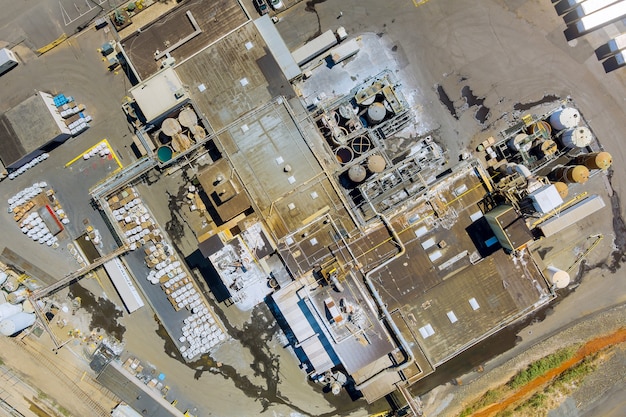US Environmental Protection: How Emerging Tech is Controlling Pollution

The US Environmental Protection Agency (EPA) is increasingly leveraging emerging technologies like advanced sensors, AI-powered data analytics, and innovative materials to enhance pollution control and environmental monitoring efforts.
The **US Environmental Protection** is actively exploring and implementing emerging technologies to revolutionize pollution control strategies. These technologies, ranging from sophisticated air quality sensors to advanced wastewater treatment systems, offer promising solutions for a cleaner and healthier environment. This article delves into the EPA’s initiatives and the innovative technologies shaping the future of environmental protection.
The EPA’s Tech-Driven Approach to Environmental Protection
The US Environmental Protection Agency (EPA) recognizes the pivotal role of technology in addressing complex environmental challenges. By embracing emerging technologies, the EPA aims to enhance its ability to monitor, prevent, and mitigate pollution effectively.
This section explores how the EPA integrates cutting-edge technologies into its regulatory and enforcement strategies, driving innovation and efficiency in environmental protection efforts.
Advanced Monitoring Technologies
The EPA utilizes advanced monitoring technologies to gather real-time data on air and water quality, enabling informed decision-making and targeted interventions.
Data Analytics and AI
Data analytics and artificial intelligence (AI) play a crucial role in processing vast amounts of environmental data, identifying pollution patterns, and predicting potential risks.
- Real-time Data Collection: Advanced sensors and monitoring networks provide continuous data streams for accurate and timely assessments.
- Predictive Modeling: AI algorithms analyze historical data to forecast pollution events and optimize resource allocation.
- Enhanced Enforcement: Data-driven insights help identify pollution hotspots and prioritize enforcement actions.
- Public Awareness: Transparent data sharing empowers communities to understand and address local environmental issues.
These advanced technologies are not just about collecting data; they’re about turning that data into actionable insights that drive meaningful change.

In conclusion, the EPA’s tech-driven approach represents a paradigm shift in environmental protection, leveraging innovation to safeguard public health and the environment.
The Role of Sensors in Pollution Detection
Sensors are essential tools in detecting and measuring pollutants in the environment. The EPA is investing in and deploying advanced sensor technologies to enhance its monitoring capabilities.
These sensors provide real-time data on various pollutants, enabling rapid response and effective pollution control strategies.
Types of Environmental Sensors
Different types of sensors are used to detect specific pollutants in air, water, and soil, providing comprehensive environmental monitoring.
Sensor Networks and Data Integration
Sensor networks enable continuous monitoring of environmental conditions, providing valuable data for analysis and decision-making.
- Air Quality Sensors: Monitor pollutants like particulate matter, ozone, and nitrogen dioxide.
- Water Quality Sensors: Detect contaminants such as chemicals, bacteria, and heavy metals.
- Soil Sensors: Measure soil composition, moisture levels, and the presence of pollutants.
- Remote Sensing: Satellite and drone-based sensors provide broad-scale environmental data.
The EPA is working to integrate data from these various sensor networks to create a holistic view of environmental conditions.
Moreover, the expansion of collaborative networks can facilitate the gathering of comprehensive data, leading to more precise conclusions regarding environmental health.
In summary, sensors play a critical role in pollution detection, providing the EPA with the data it needs to protect public health and the environment.
AI and Machine Learning for Environmental Analysis
Artificial intelligence (AI) and machine learning (ML) are transforming environmental analysis by enabling faster and more accurate processing of complex data.
The EPA is utilizing AI and ML technologies to identify pollution patterns, predict environmental risks, and optimize resource allocation.

Predictive Modeling
AI and ML algorithms can analyze historical environmental data to predict future pollution events and assess the effectiveness of mitigation strategies.
Data-Driven Decision-Making
AI-driven insights enable the EPA to make informed decisions about pollution control measures, enforcement actions, and resource management.
- Pattern Recognition: AI algorithms identify subtle patterns in environmental data that may indicate pollution sources or trends.
- Risk Assessment: Machine learning models assess the potential risks associated with different environmental factors.
- Resource Optimization: AI helps allocate resources efficiently to address the most pressing environmental challenges.
- Improved Accuracy: AI algorithms enhance the accuracy of environmental monitoring and analysis.
These technologies are not just about automating tasks; they’re about uncovering insights that would be impossible to detect manually.
In conclusion, AI and machine learning are powerful tools for environmental analysis, empowering the EPA to make smarter decisions and protect the environment more effectively.
Innovative Materials for Pollution Remediation
Innovative materials are revolutionizing pollution remediation efforts by providing more efficient and sustainable solutions for removing contaminants from the environment.
The EPA supports the development and deployment of advanced materials for various pollution control applications, including water treatment, air purification, and soil remediation.
Nanomaterials for Water Treatment
Nanomaterials offer unique properties for removing pollutants from water, such as heavy metals, organic compounds, and pathogens.
Bio-Based Materials for Soil Remediation
Bio-based materials provide sustainable solutions for remediating contaminated soils, promoting ecological restoration and reducing environmental impacts.
- Activated Carbon: Removes organic pollutants and improves water quality.
- Nanoparticles: Efficiently capture and remove heavy metals from water and soil.
- Bioremediation Agents: Microorganisms that break down pollutants in soil and water.
- Membrane Technologies: Selective barriers for removing contaminants from water.
The EPA is also focusing on ensuring that these materials are safe and environmentally friendly.
In summary, innovative materials are transforming pollution remediation, offering more effective and sustainable solutions for protecting the environment.
Community Engagement and Technology Adoption
Engaging communities in environmental monitoring and pollution control efforts is crucial for achieving sustainable outcomes. The EPA promotes the adoption of technological solutions at the local level.
This includes supporting community-based monitoring programs, providing access to environmental data, and fostering collaboration between stakeholders.
Citizen Science Initiatives
Citizen science initiatives empower communities to participate in environmental monitoring, collecting valuable data and raising awareness about local environmental issues.
Technology Training and Education
Providing technology training and education to communities enables them to effectively use environmental monitoring tools and participate in pollution control efforts.
- Mobile Apps: User-friendly apps for reporting pollution incidents and accessing environmental data.
- Community Workshops: Training sessions on using environmental monitoring equipment and interpreting data.
- Online Platforms: Interactive platforms for sharing environmental information and collaborating on solutions.
- Educational Programs: School-based programs that teach students about environmental science and technology.
By engaging communities, the EPA can foster a sense of ownership and responsibility for protecting the environment.
In conclusion, community engagement is essential for successful technology adoption, empowering communities to play an active role in environmental protection.
Challenges and Future Directions
While emerging technologies offer tremendous potential for pollution control, several challenges must be addressed to ensure their effective implementation.
These challenges include cost, scalability, data security, and regulatory frameworks. Overcoming these challenges will pave the way for wider adoption of these technologies.
Cost-Effectiveness
Emerging technologies can be expensive to implement, requiring innovative financing mechanisms and cost-sharing arrangements.
Scalability
Scaling up the deployment of emerging technologies requires significant investment in infrastructure and logistical support.
- Data Security: Protecting environmental data from cyber threats and ensuring privacy.
- Regulatory Frameworks: Developing clear and consistent regulations to guide the use of emerging technologies.
- Public Acceptance: Building public trust in new technologies and addressing concerns about their potential impacts.
- Infrastructure Development: Investing in the infrastructure needed to support the deployment of emerging technologies.
The EPA is working to address these challenges through research, development, and partnerships.
Ultimately, future success hinges on continued innovation, collaboration, and a shared commitment to environmental stewardship.
| Key Point | Brief Description |
|---|---|
| 🧪 Advanced Sensors | Real-time monitoring of pollutants in air, water, and soil. |
| 🤖 AI & Machine Learning | Analysis of environmental data for pattern recognition and predictive modeling. |
| 🌱 Innovative Materials | Use of nanomaterials and bio-based materials for pollution remediation. |
| 🤝 Community Engagement | Involving communities in environmental monitoring and pollution control. |
FAQ
▼
Advanced sensors allow for real-time monitoring of pollutants in various environments, providing data that informs immediate action and long-term strategies for pollution control.
▼
AI and ML algorithms analyze complex environmental data to identify patterns, predict risks, and optimize resource allocation, enhancing the accuracy and efficiency of environmental analysis.
▼
Innovative materials include nanomaterials for water treatment and bio-based materials for soil remediation, which offer sustainable and effective solutions for removing pollutants.
▼
Community engagement ensures that local knowledge and needs are integrated into environmental monitoring and pollution control efforts, fostering a sense of ownership and responsibility.
▼
Challenges include cost-effectiveness, scalability, data security, and regulatory frameworks. Addressing these issues is crucial for the widespread adoption of these technologies to enhance environmental protection.
Conclusion
The **US Environmental Protection** Agency’s commitment to utilizing emerging technologies represents a significant stride towards more effective pollution control. By integrating advanced sensors, AI-driven analytics, and innovative materials, the EPA is enhancing its ability to monitor, prevent, and remediate pollution. Embracing these technological advancements offers a promising path toward a cleaner, healthier, and more sustainable environment for all.





